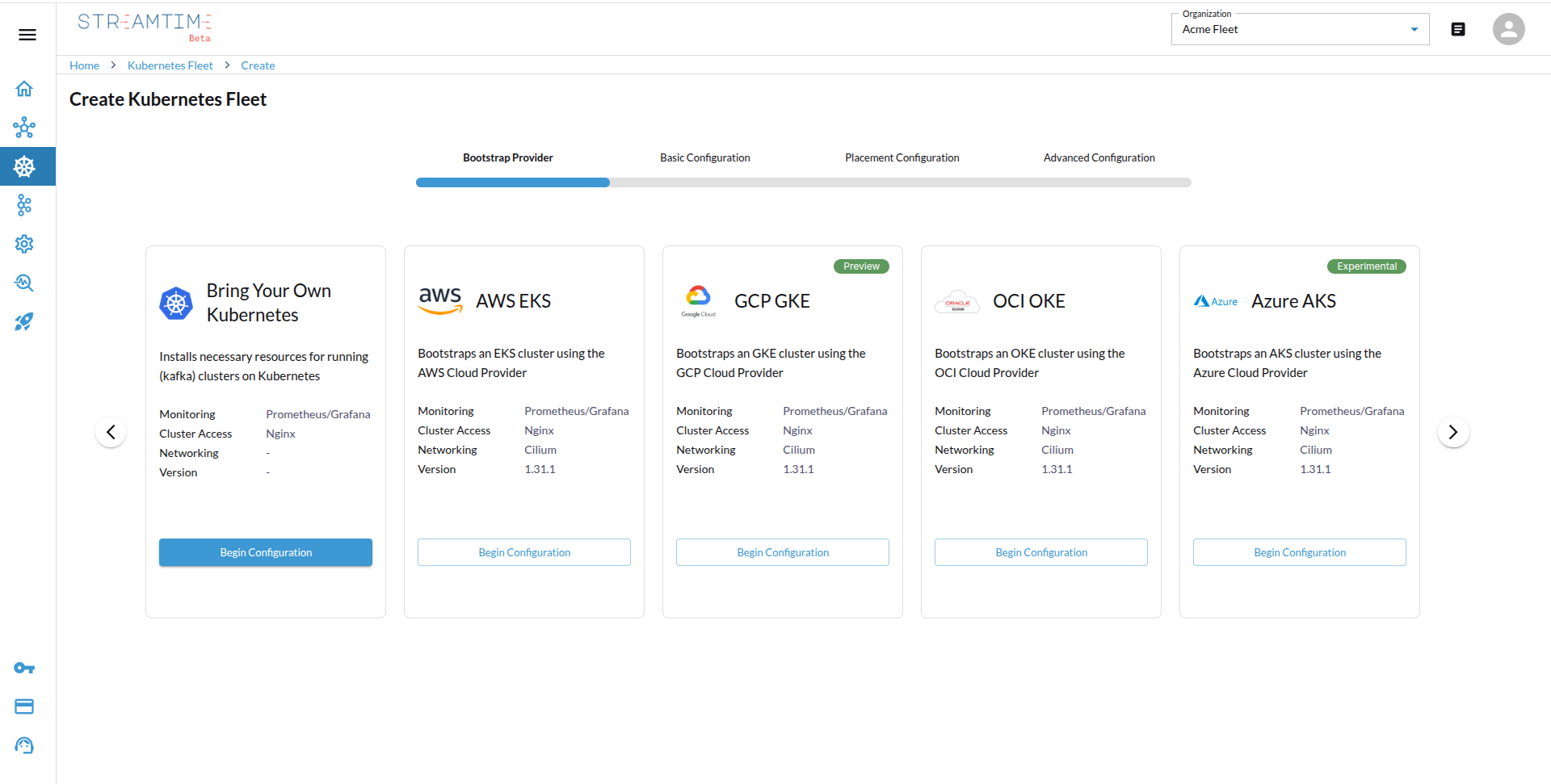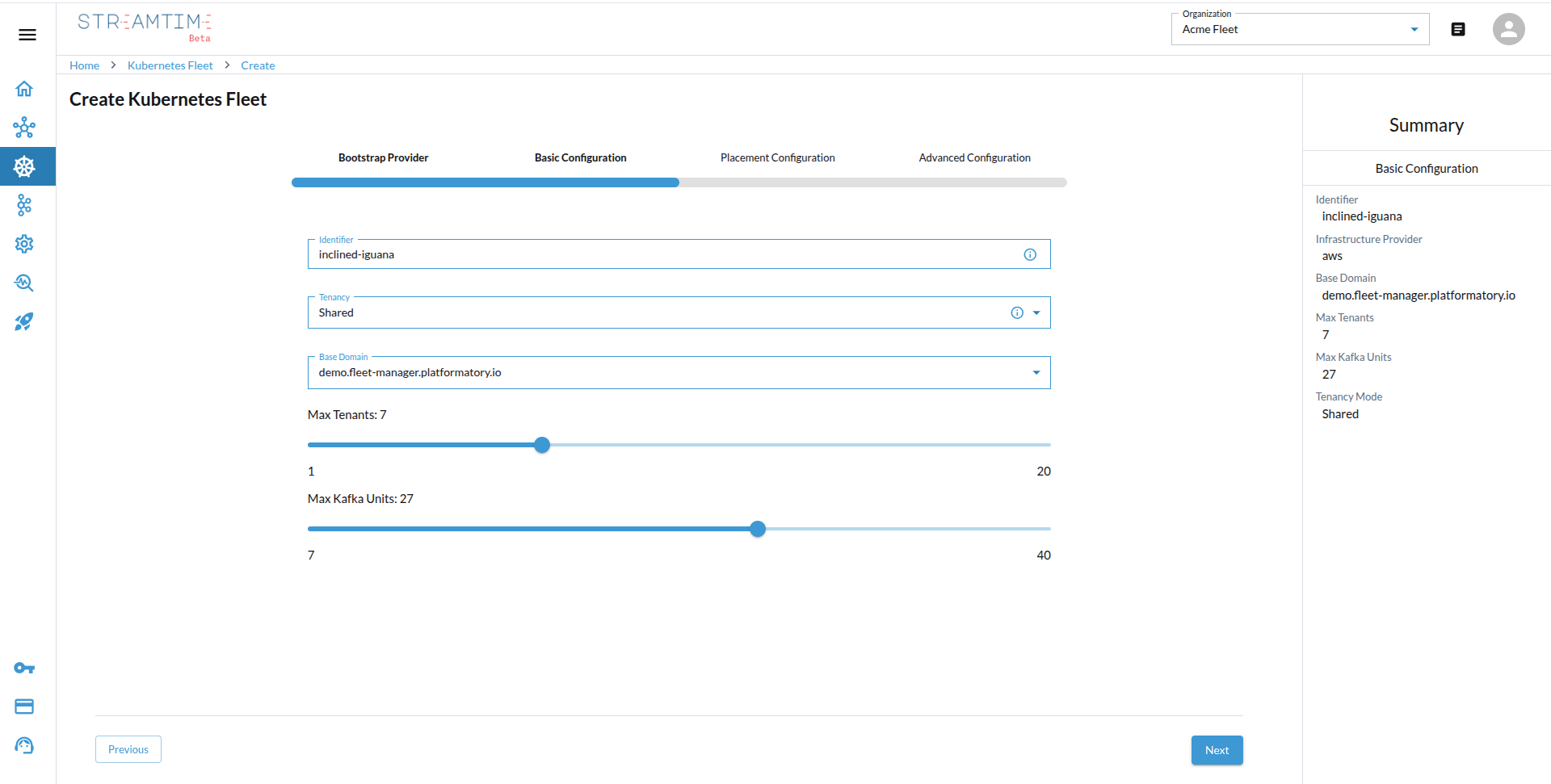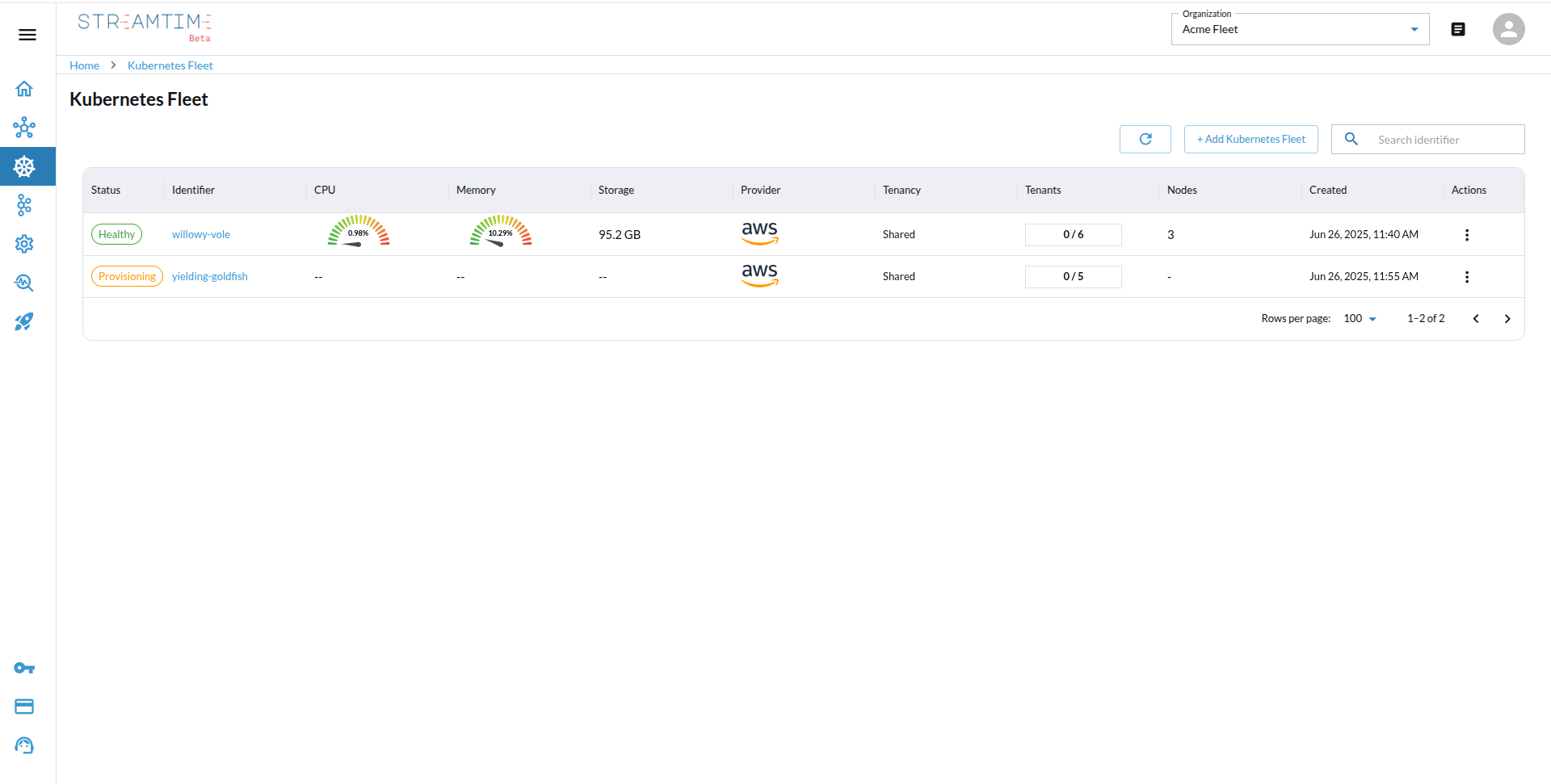Video Tutorial: Bootstrapping a Kubernetes Fleet on AWS
Bootstrapping a Kubernetes Fleet on AWS
Follow these four steps to create and configure a Kubernetes fleet on AWS using Streamtime.
Key Features
- Automated Cluster Management: Streamtime provisions and manages Kubernetes clusters on AWS.
- Flexible Tenancy Models: Choose between shared, isolated, or dedicated tenancy for your Kafka clusters.
- Scalable Throughput: Define your Kafka units based on workload requirements (1 Kafka unit = 20 MBps).
- Region and Placement Options: Deploy in your preferred AWS region with optional placement metadata for compliance or latency optimization.
- Advanced Configuration: Customize VPC, instance types, and other AWS-specific settings to fit your infrastructure needs.
1. Select AWS as Bootstrap Provider
- In the Streamtime UI, click “Create Kubernetes Fleet”.
- Choose AWS as your bootstrap provider.

2. Configure Tenancy & Sizing
- Select the tenancy model:
shared,isolated, ordedicated. - Set your base domain, maximum tenancy (number of Kafka clusters per fleet), and maximum Kafka units (throughput capacity).
- Choose the appropriate node size for your workload (e.g., 1 Kafka unit = 20 MBps, recommended node: 4 vCPU / 16 GB RAM).

3. Placement Configuration
- Select the AWS region where you want to deploy your Kubernetes fleet.
- Optionally, specify placement metadata for compliance or latency optimization.

4. Advanced Configuration
- Select an existing VPC ID or create a new VPC.
- Choose the instance type for your nodes.
- Configure any additional AWS-specific settings as needed.

Deploy and Validate
- Click Deploy. Streamtime will provision and configure the Kubernetes fleet on AWS.
- Once deployed, the fleet status will show as “Healthy” and is ready for Kafka cluster deployments.

API Reference
Create a Kubernetes Fleet on AWS
curl -X POST https://<streamtime-api-endpoint>/organizations/<your-org-id>/infrastructure/ \
-H "Authorization: Bearer YOUR_API_TOKEN" \
-H "Content-Type: application/json" \
-d '{
"identifier": "narrow-impala",
"infra_type": "aws",
"domain": "<your-domain>.com",
"max_tenants": 3,
"max_kafka_units": 12,
"tenancy_mode": "Shared",
"advanced_config": {
"vpc_id": "vpc-05ab2abs23359a6e",
"instance_type": "t3.large",
"cluster_public": false
},
"placement_config": {
"account": "plf-fleet-manager",
"region": "us-east-1"
},
"organization": "<your-org-id>"
}'
Response:
{
"id": "78d2d356-3898-4c3c-ac26-e5c9b0b595bf",
"organization": "acme",
"domain": "<your-domain>.com",
"identifier": "narrow-impala",
"provisioner_name": null,
"destroyer_name": null,
"infra_type": "aws",
"tenancy_mode": "Shared",
"max_tenants": 3,
"max_kafka_units": 12,
"kubeconfig": null,
"kubeconfig_str": null,
"metadata": {},
"prometheus_endpoint": null,
"opencost_endpoint": null,
"loki_endpoint": null,
"loadbalancer_dns": null,
"placement_config": {
"account": "plf-fleet-manager",
"region": "us-east-1"
},
"advanced_config": {
"vpc_id": "vpc-05ab2abs23359a6e",
"instance_type": "t3.large",
"cluster_public": false
},
"advanced_properties": {},
"status": "Pending",
"created_at": "2025-07-17T04:31:32.844883Z",
"updated_at": "2025-07-17T04:31:32.844911Z",
"network": null
}